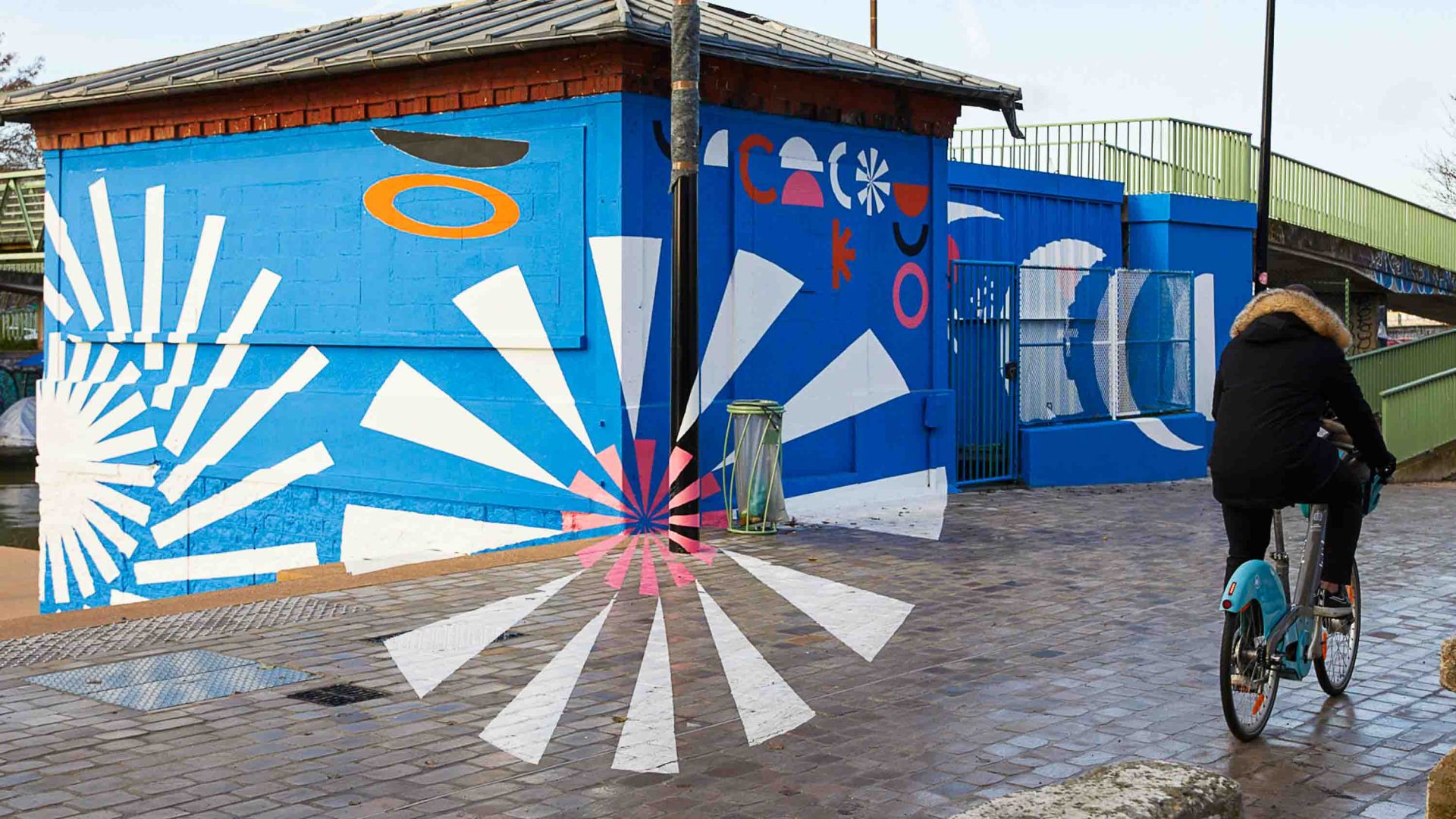
Before the Olympics, the oft-overlooked suburb of Saint-Denis wasn’t exactly top of the tourist trail—but now that’s starting to change. Paris resident Caroline Harrap heads north and finds stately tombs, street art and global cuisine.


Before the Olympics, the oft-overlooked suburb of Saint-Denis wasn’t exactly top of the tourist trail—but now that’s starting to change. Paris resident Caroline Harrap heads north and finds stately tombs, street art and global cuisine.
To say that the kings and queens of France must be turning in their graves is probably pushing it, but they might be raising an eyebrow. Amid the fairy-tale-like tombs of the royal necropolis, inside the basilica of Saint-Denis, vast throngs of Olympics sports fans are jostling for a glimpse—and a sneaky selfie—before heading off to the athletics. While it’s true that this Gothic cathedral could hardly be described as a ‘hidden gem’, it’s almost certainly never seen a crowd quite like this before.
As one of the main locations for the Paris 2024 Games—and an integral part of their legacy—the northern suburb of Saint-Denis has been placed firmly in the international spotlight this summer. Home to the new Aquatics Center, the existing Stade de France stadium, and part of the athletes’ village, this once-overlooked area has provided the backdrop for some of the Games’ most magical moments, not least the Olympics closing ceremony where Mission: Impossible star Tom Cruise descended dramatically into the arena.
So not only has Saint-Denis been beamed all around the world, alongside iconic sites such as the Eiffel Tower, the Louvre and the Seine, the town has also seen unprecedented numbers of visitors. According to the Paris tourist office, Paris je t’aime, local day-trippers during the Olympics were up +40 percent versus 2023—and foreign overnight stays increased by +205 percent. In both cases, this was among the steepest increases in the region.

While Saint-Denis does have so much to recommend it (more of that shortly), it’s fair to say it hasn’t exactly been top of the tourist trail historically. Putting aside the basilica and Stade de France, Saint-Denis is probably best known as the largest town in the much-maligned département of Seine-Saint-Denis, which is often described as the most deprived in the country. Once an important center for industry, the region later became more synonymous with its high levels of poverty—and that lingering cliché of the bleak banlieues (suburbs).
When you factor in the multi-purpose arts center Le 6b, a former office building now home to creatives from artists, sculptors and graphic designers to filmmakers, architects and musicians, and the arts collective 60 AdaDa, with its buzzy gallery space, you begin to get a feel for the cultural vitality of the town.
More recently, however, these multicultural neighborhoods have been gaining a reputation of a different kind. “The northern areas of Paris, such as Saint-Denis, are emerging as exciting new parts of the city to discover,” says Corinne Menegaux, managing director of Paris je t’aime. And it’s hard to disagree.
Now a hotbed for urban art, artisan crafts and contemporary creation, they have a cultural vibrancy all of their own. Then there’s the lively nightlife, pioneering hip-hop talent and flourishing culinary scene. “Far from worn-out stereotypes, this is where the society of tomorrow is being shaped today,” says Stéphane Troussel, president of the département and interim president of Seine-Saint-Denis Tourisme. And with the added boost of the Olympics, and the associated regeneration, it feels like a pivotal moment all-round.
For a start, there’s the new metro station, Saint-Denis Pleyel, which provides a direct link with the center of Paris—a long-term transport project accelerated by the Games—while the wider legacy includes the renovation of local sports facilities, the redevelopment of the canal, and the addition of public artworks.
In the longer term, the Aquatics Center will become a multi-sports venue, open to all, and the athletes’ village developed into a vibrant new neighborhood. The area also has a hip new hotel, the H4 Hotel Wyndham, in a converted tower block. And that’s before we get to the existing attractions.
“The Paris 2024 Games have had a significant impact on the development of the wider area, and Saint-Denis in particular, and on its image,” says Leyla Temel, president of the agency for economic and touristic development of Plaine Commune, which takes in nine towns across the region. “We are now going to build on this.”
For those interested in discovering Saint-Denis and its surrounds, where should you start? Arguably the most important site is the basilica, also designated a cathedral since 1966, and the earliest known masterpiece of Gothic art. Named after Saint-Denis, a patron saint of France (and of Paris), who reputedly carried his own head here (long story…), it’s also the final resting place for the country’s monarchs, with many of them immortalized in a state of stoney repose—it feels like stepping into a scene from Narnia where the White Witch had the power to petrify her enemies. Then there are the basilica’s celebrated stained-glass windows casting a kaleidoscope of colors over the interior, and the atmospheric archaeological crypt and sarcophagi.
An easy walk from here is the municipal museum, Le Musée d’art et d’histoire Paul Éluard, named after the Surrealist poet who was born in Saint-Denis. Found in a Carmelite convent dating from 1625, it’s a brilliant, quirky and properly old-school museum—in the best sense. For the ludicrously low admission fee of five euros, visitors can discover everything from medieval artefacts to paintings illustrating the life of the convent to one of the most important collections on the Paris Commune of 1871.
For a more contemporary take on Saint-Denis, much of this is happening canalside—one of many locations to benefit from the Olympic legacy with the creation of new pedestrian and cycle paths. It’s also home to the longest urban art trail in Europe. Spanning around five kilometers, ‘Street Art Avenue’ features more than 40 striking artworks.
When you factor in the multi-purpose arts center Le 6b, a former office building now home to creatives from artists, sculptors and graphic designers to filmmakers, architects and musicians, and the arts collective 60 AdaDa, with its buzzy gallery space, you begin to get a feel for the cultural vitality of the town.
“Ever since Saint-Denis was named as one of the main sites for the Olympics, we have seen a growing level of interest, and we hope that will increase. From its royal past to the industrial heritage, and the newly revitalized canal to the amazing street art, there is so much to discover here and across the region.”
- Tristan Bayle, local tour guide
“There has always been a rich artistic and cultural programme in the area,” says Marion Chombart de Lauwe, a resident artist at Le 6b who was also commissioned to create a special illustration of Saint-Denis (below) to commemorate the Games. “Many talented artists have benefitted from this, whether for the visual arts, dance shows or other events, and it has allowed us to discover the area’s artistic and cultural wealth.”
As you’d expect from anywhere around Paris, there’s no shortage of culinary choice either. While the attractive square by the basilica is home to several popular spots, the restaurant O’Grand Breton, just a few steps away, is a more intimate affair with a select menu of seasonally led French dishes.
It’s also worth exploring the wider town, where the area’s cultural diversity is reflected in its global cuisine, often at surprisingly good prices. For African dishes spanning Senegal, Cameroon and the Ivory Coast, try neighborhood favorite Chez Suzanne; for Portuguese specialities close to the Stade de France, Le Transmontano is the one; and for Vietnamese and Chinese cuisine, La Petite Fille de Tan Chau comes highly recommended.
Another place well worth a visit is the culture café Marguerite Charlie for its eclectic menu of multicultural dishes that changes every two weeks. Then there’s the excellent community café of Coopérative Pointcarré, renowned for its coffee, and a boutique that stocks locally made items. Look out for their own ‘I love 93’ merchandise—the administrative number of the département—that kicks those clichés firmly into touch.
Alternatively, there’s the international food market, the Marché de Saint-Denis, open on Tuesday, Friday and Sunday mornings—alongside the surrounding stalls, it’s one of the largest markets in the area. Located in an ‘Eiffel-style’ iron hall dating from the 19th century, some 80 traders sell everything from local produce grown in the last market garden of Saint-Denis to products from some 50 different countries.
“Ever since Saint-Denis was named as one of the main sites for the Olympics, we have seen a growing level of interest, and we hope that will increase,” says local tour guide Tristan Bayle. “From its royal past to the industrial heritage, and the newly revitalized canal to the amazing street art, there is so much to discover here and across the region.”
But if you only do one thing in the wider area, it has to be the flea market at Saint-Ouen, the largest of its kind in the world. Open Saturday to Monday, its 12 covered markets, several shopping streets and any number of smaller stalls, itinerant traders and pure chancers sell everything from vinyl records and vintage Chanel to antique furniture—delve deep for the bargains and never be afraid to make an offer.
Back in Saint-Denis, while it’s true that not everyone here welcomed the Games, amid concerns that gentrification could bring its own potential problems, the overwhelming feeling is that the Olympic legacy will be a positive one. Certainly, this lesser-known side of Paris is one that is well worth discovering. And who knows, over at the basilica, far from turning in their graves, those kings and queens might just be nodding their approval.
****
Adventure.com strives to be a low-emissions travel publication. We are powered by, but editorially independent of, Intrepid Travel, the world’s largest travel B Corp, who help ensure Adventure.com maintains high standards of sustainability in our work and activities. You can visit our sustainability page or read our Contributor Impact Guidelines for more information.

Based in Paris, Caroline Harrap is a freelance journalist and editor whose work has been published by BBC Travel, France Today, The New European, Euronews and The Guardian, among others. A member of several professional bodies, she is also a co-founder of the Society of Freelance Journalists. Away from work, her favorite way to spend a weekend is getting off the beaten track in her home city, especially if it involves good coffee, vegan croissants or a glass of Bordeaux.








Can't find what you're looking for? Try using these tags: